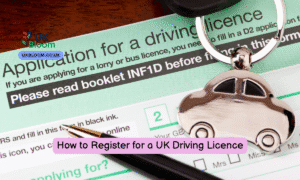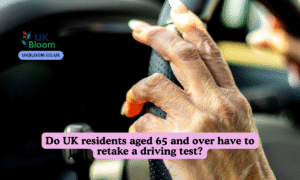Bringing a vehicle into the UK involves a series of steps, including notifying customs, paying the appropriate tax and duty, ensuring compliance with UK standards, and registering with the DVLA. This comprehensive 2025 guide from UKBloom.co.uk explains everything you need to know to legally Importing a Car to the UK
Types of Vehicle Imports
There are two main types of car imports into the UK:
Personal Imports
Imported by individuals for personal use. Often applicable when:
- Relocating to the UK with your own car
- Bringing in a classic or vintage car
- Buying a car abroad for long-term UK use
Commercial Imports
Imported by companies or dealerships to sell within the UK. Commercial imports have stricter regulatory and compliance requirements.
Table of Contents
Step 1: Prepare Before Shipping
Before importing your vehicle:
- Ensure it meets UK safety and environmental standards
- Check emissions compliance
- Collect documentation:
- Original vehicle registration certificate
- Purchase invoice
- Proof of ownership
- Foreign licence plate details
- Confirm the vehicle’s date of manufacture
If you’re moving from abroad, make sure the vehicle is registered in your name and part of your household belongings.
Step 2: Notify HMRC Using the NOVA System
Within 14 days of the vehicle’s arrival in the UK, you must notify HMRC using the NOVA (Notification of Vehicle Arrivals) system.
- Register and file online here
- No NOVA = No DVLA registration
Required Details:
- Vehicle make, model, VIN
- Importer details
- Invoice or proof of value
- Shipment date and point of entry
Step 3: Pay VAT and Duty (If Applicable)
Import tax depends on whether the vehicle comes from the EU or non-EU countries and your residency status.
Imports from the EU:
- VAT may apply unless vehicle is over 6 months old and has over 6,000km on the odometer.
- Otherwise, 20% VAT on the invoice value is due.
Imports from Non-EU Countries:
- 10% import duty on vehicle value
- 20% VAT on total value (vehicle + shipping + duty)
Use the UK Trade Tariff tool to calculate rates.
Tax Exemptions:
- Transfer of Residence (ToR) relief available if:
- You are moving to the UK permanently
- Vehicle has been owned for over 6 months abroad
- You’ve lived outside the UK for at least 12 months
Apply for ToR: Transfer of Residence relief form
Step 4: Vehicle Approval & Compliance Testing
Your car must meet UK standards before DVLA registration. Depending on the vehicle’s origin and age, you may need:
Individual Vehicle Approval (IVA)
- Needed for cars under 10 years old
- Apply through DVSA
- Cost: ~£200–£500
Mutual Recognition
- For EU-registered vehicles that meet European Whole Vehicle Type Approval
- Minimal inspection required
MOT Test
- Required if the vehicle is over 3 years old
- Conducted at any approved UK MOT station
Step 5: Vehicle Insurance
Before you can register and drive the vehicle, you must obtain UK vehicle insurance. Options include:
- Temporary import insurance (valid for 1–28 days)
- Full UK insurance (once registered)
Comparison websites:
Step 6: Register the Vehicle with DVLA
After NOVA submission, tax payment, vehicle testing, and insurance, apply to the DVLA to get your UK registration number and V5C logbook.
Required Documents:
- Completed V55/5 or V55/4 form
- Proof of identity and UK address
- Insurance certificate
- MOT certificate (if applicable)
- IVA or Mutual Recognition approval
- NOVA reference number
- Registration fee: £55
- Original foreign registration certificate
Submit by post to:
DVLA, Swansea, SA99 1BE
Step 7: Pay Vehicle Tax
All imported vehicles must be taxed before they can be legally used on UK roads.
Road Tax Rates:
- Based on CO₂ emissions
- VED rates by emissions
You can tax the car at the time of registration or online once you receive your registration number:
Tax Your Vehicle
Step 8: Get UK Licence Plates
Once DVLA issues your registration certificate (V5C), you can order UK licence plates from a DVLA-registered number plate supplier.
- Must provide proof of ID and vehicle registration
- Cost: £20–£35
Find a supplier: DVLA Plate Suppliers
Step 9: Optional Modifications for UK Roads
You may need to adapt your car for UK roads:
- Speedometer must read in mph
- Headlights must dip to the left
- Rear fog light must be correctly positioned
These modifications are mandatory for MOT approval.
Common Mistakes to Avoid
- Missing the NOVA deadline (within 14 days)
- Forgetting to pay VAT/import duty
- Driving before registration and tax
- Failing to modify headlights/speedometer
Penalties may include:
- Vehicle seizure
- Late payment fines
- Inability to register the vehicle
Internal Links for UK Drivers
- UK Driving Licence Guide
- Car Taxes in the UK
- Driving in the UK on a Foreign Licence
- Buying a Car in the UK
- UK Vehicle Insurance Guide
Summary Table: Importing a Car to the UK Process
| Step | Description | Timeline |
|---|---|---|
| Notify HMRC (NOVA) | Within 14 days of arrival | Immediate |
| Pay Tax/Duty | After NOVA confirmation | Varies |
| Compliance Test (IVA) | If car < 10 years or from non-EU country | ~2–4 weeks |
| MOT | If over 3 years old | Same day |
| Insurance | Must be valid before registration | 1–3 days |
| DVLA Registration | V55 form, fee, and documents | 4–6 weeks |
| Road Tax Payment | Based on CO₂ and value | Online/At reg |
| Licence Plate Fitting | After DVLA sends V5C | 1–2 days |
Frequently Asked Questions (FAQs)
Can I drive an imported car with foreign plates?
Yes, for up to 6 months in any 12-month period if you’re a visitor. If you become a UK resident, you must register the car within 6 months or after importing.
How long does DVLA take to register an imported car?
Usually 4–6 weeks from the date you send a complete application with correct documents.
Can I import a left-hand drive (LHD) vehicle?
Yes. LHD cars are legal in the UK but may require modifications for headlamps and speedometers.
What if I bring my car temporarily?
You may not need to register if:
- You’re visiting for less than 6 months
- Vehicle is fully insured and taxed in its home country
More info: Temporary Vehicle Imports
Final Thoughts from UK Bloom
Importing a car into the UK can be cost-effective and practical, but it requires attention to detail and legal compliance. Whether you’re relocating, buying a vehicle abroad, or importing a classic, follow every step to avoid costly delays or penalties.
Explore our UK Driving Resource Centre for tools, checklists, and guides tailored to vehicle owners and new arrivals.
Useful External Resources
- HMRC NOVA System
- DVLA Vehicle Registration
- Transfer of Residence Relief
- MOT Testing Information
- UK Trade Tariff
Disclaimer: This article is for informational purposes only. Always consult the UK Home Office, DVLA, or a customs adviser for personalised support.
© 2025 ukbloom.co.uk – This article is free for personal use. Do not copy or republish without attribution or permission.






